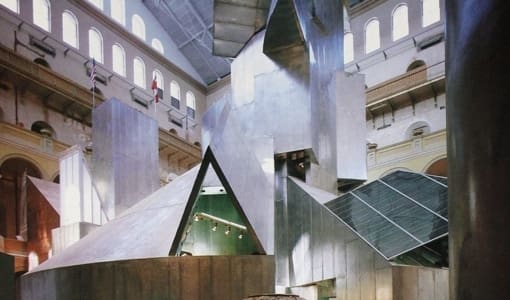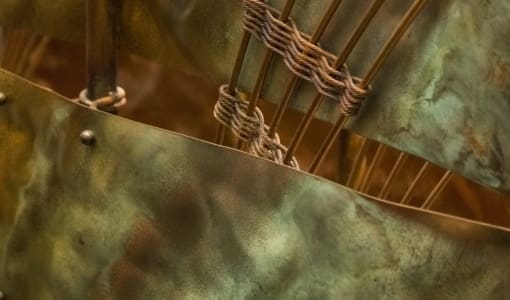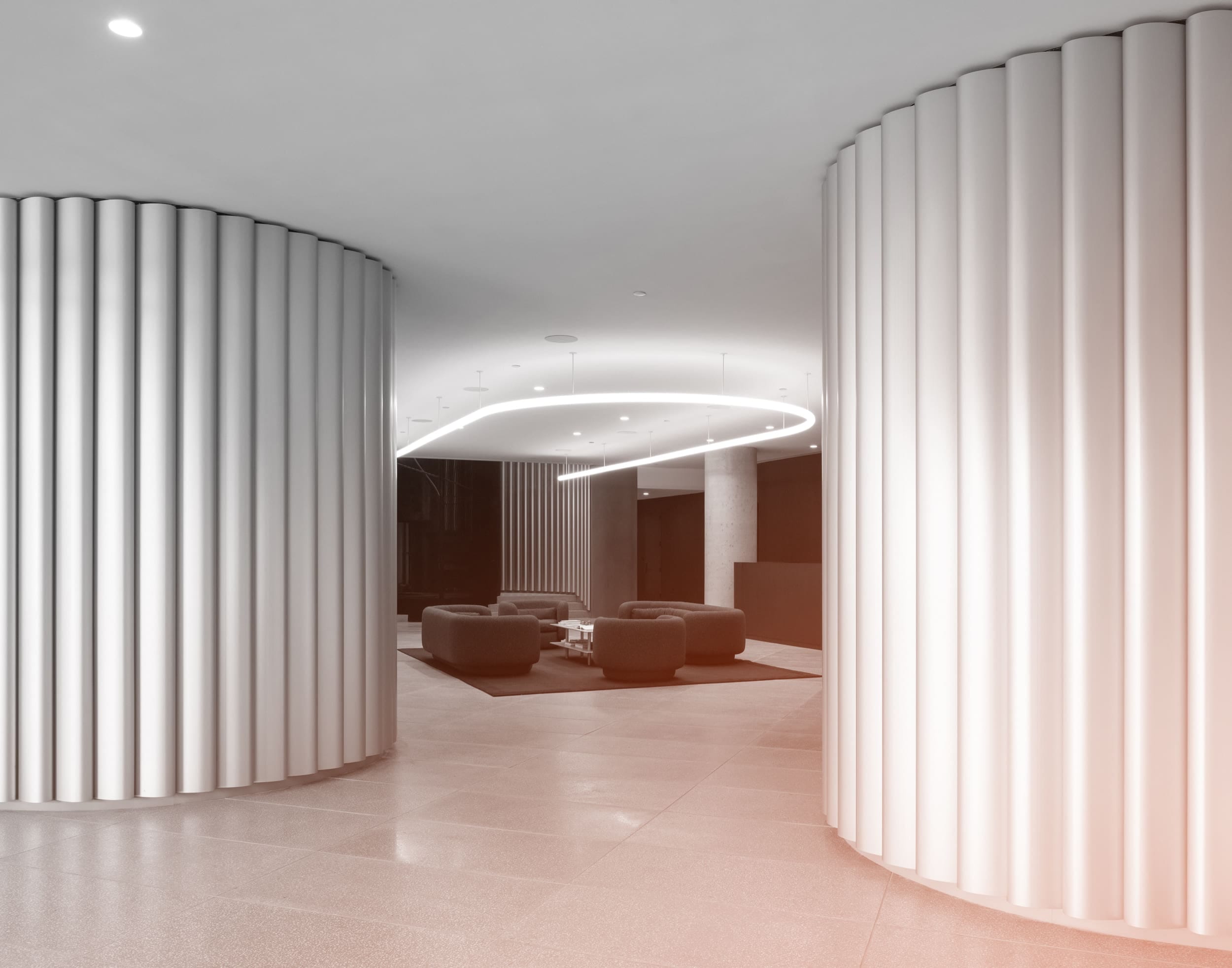Brass: Qualities & Applications in Architecture
*Although we do not offer supply only sheets for brass, we are happy to custom fabricate based upon your project’s needs. We selectively partner with vendors offering the highest quality materials available in many sizes and thicknesses. Please call for details.
Brass is the name given to those copper alloys that contain zinc as the major alloying constituent. The brasses are broken down into a series of groups classified by the crystal makeup of the copper alloy. As more zinc is added the crystal structure of the copper alloy changes. This change affects the color and the forming ability of the metal.
The term brass is often used to reference the color rather than the alloy. For instance, you can polish bronze nautical fittings to a lustrous golden yellow, a color most associate with the term “brass”.
Similar but opposite — when weathered and patinated, many copper alloys will exhibit similar visual characteristics. The dark brown or green patina which forms on the surface of copper alloys disguises the metal underneath its protective patina. When people call a material “statuary bronze”, they are referring to the name given to describe a range of bronze-color tones produced by chemical enhancement on various copper alloys, both brass and bronze alloys.
For the reasons above, selecting a copper alloy for your project should be based on how the metal will perform in any given environment.
Fabricators who work with the metal and architects who design with it have, over the years, referred to the copper alloys as bronze if their color ranges are in the darker brown tones.
Medallion sculpture made using brass alloy
PHOTO © A. ZAHNER COMPANYEnvironmental and Performance Considerations for Brass
Some brasses contain lead as an alloying constituent. When lead is added, it does not dissolve into the brass alloy mix. Instead, the lead disperses throughout the metal and remains as a separate solid trapped within the brass. Lead gives brass a “free cutting” characteristic. This basically means that during certain fabrication operations, the brass will come off in small shards, improving tool life and wear.
In the United States, federal law considers brass alloys containing less than 8% lead as “lead free.” Some mechanisms used to pump well water in the United States were manufactured using leaded brasses. The testing of water from these pumps showed high levels of lead, apparently leaching from the brass. The lead could also have come from the solder used to seal the parts of the pump. Most of the brass alloys used in architecture contain less than 8% lead. These alloys under normal working conditions and normal exposures should pose no health concerns. It is, however, recommended to avoid drinking or eating from fabrications made from these alloys.
How to avoid Stress Corrosion and Cracking
Stress corrosion cracking occurs when copper alloys are subjected to stress, moisture, air, and ammonia. The ammonia is atmospheric, and the amount required is very small. It could come from building materials or decaying matter. Stress corrosion cracking is the most irreversible type of corrosion, because it involves failure of the metal’s structural stability.
This type of corrosion can be avoided by using brasses containing less than 15% zinc. Cartridge Brass was invented for this purpose.












 PHOTO ©️ Parrish Ruiz de Velasco (parrch.com)
PHOTO ©️ Parrish Ruiz de Velasco (parrch.com)



 © Fedora Hat Photography
© Fedora Hat Photography Photo by Andre Sigur | ARKO
Photo by Andre Sigur | ARKO PHOTO © NAHO KUBOTA
PHOTO © NAHO KUBOTA





 Ɱ, Creative Commons Attribution-Share Alike 4.0 International license, edited.
Ɱ, Creative Commons Attribution-Share Alike 4.0 International license, edited.

